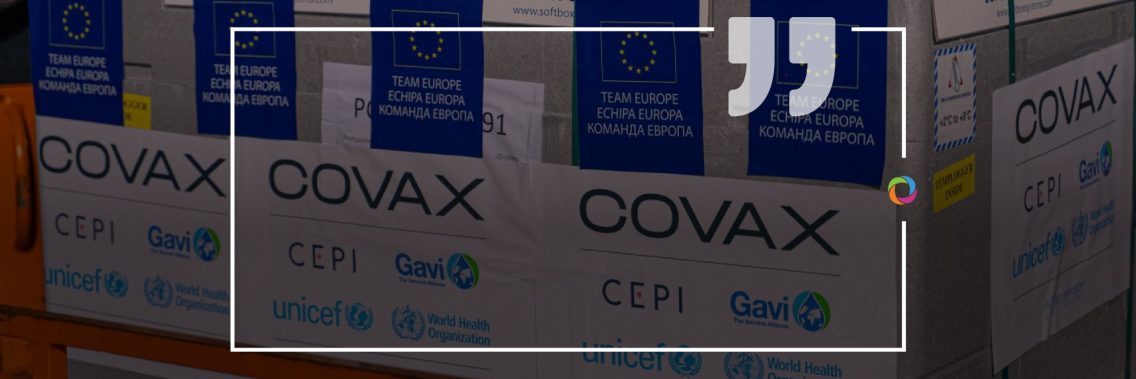From the outset, COVAX has strived to maintain its ambitious goal to provide global access to COVID-19 vaccines. However, at present, the overall delivery schedule of COVID-19 vaccines to poorer countries faces a “very high” risk of failure which could lead to billions of people without access to vaccines until 2024, according to reports. Is COVAX part of the problem or the solution? Let’s see what global health experts say about this.
What are some mistakes that COVAX has made in providing global access to COVID-19 vaccines?

“COVAX’s purpose-driven mission “to accelerate the development and manufacture of COVID-19 vaccines, and to guarantee fair and equitable access for every country in the world” should have declared COVID-19 vaccines as a ‘public good’, an entitlement to be able to live a life with dignity necessary for equitable global access to vaccines and to control the pandemic. Globally, health and nutrition outcomes are deeply unfair. In this trying time, when relief for the human race is the need of the hour, the plights and predicaments of the most excluded have become compounded due to poor access to vaccines. COVAX’s target to have 2 billion doses available by the end of 2021 to protect high-risk and vulnerable people, as well as frontline healthcare workers, needs a revisit and is too low to prevent the global spread. The manufacturing hubs could have been more in number and decentralised. COVAX could have pushed countries to lift export control on critical raw material needed for vaccine production. To get legally binding commitments from member countries as part of a financial mechanism known as Advance Market Commitment (AMC) and preference over potential vaccines including effective candidates because of partner’s funding arrangements has its own limitations. Like the politics of poverty, along with the technological difficulties of vaccine development, I think there is a political issue between rich and poor countries. The rich countries are being able to reserve vaccines more than the requirement but, on the other hand, the poor countries have far from adequate doses and dozens of countries are still waiting for the vaccines to arrive. COVAX’s strategy could have come up with a structured and inclusive global dialogue represented by powerful voices from poor nations. It should have considered public vs. private interest agenda, unequal power relations, vaccine nationalism and monopoly, and pseudo monopsony by nations. In our search for a new world order where science, technology, and business can uphold human and ethical values and the rule of law, I think, such a powerful global platform like COVAX could have had its agenda and institutional mechanisms decided by a global watchdog under the UN General Assembly.”

“I think COVAX is based on three key principles that make it an ideal arrangement to pursue the goal of vaccine affordability and accessibility. Firstly, it hinges upon the principle of global health solidarity, i.e., wealthier participating countries share a commitment to shoulder the costs of assisting less fortunate nations. Secondly, it uses bulk purchasing, which means smaller countries would be able to enjoy lower prices than they would face if they had to purchase their small quantities individually. Thirdly, the facility provides the basis for cooperative effort in development and delivery, thus recognizing COVID-19 vaccines as global public goods. In theory, these are sound and admirable principles that have been used for many years to solve public health problems.”

“The COVAX system was established to avoid rich countries collecting all the vaccines that are still being produced in too small quantities to be able to meet world demand. The COVAX system is a funding mechanism that should enable 92 low- and middle-income countries to have access to vaccines. However, rich countries are approaching manufacturers to provide additional doses of vaccines which affects their supply contracts with COVAX so the number of vaccines allocated to COVAX is therefore decreasing.”
Is COVAX the right way of making sure that vaccines are affordable to everybody and can reach the most people? Discuss your position.

“Technology, business, politics, and the call of humanity are interlinked. COVAX is a huge undertaking akin to impacting with a force that will shake the entire globe. The truth is that such a set-up has never been tried before. COVID-19 gave an opportunity to create such access/acceleration to access. It will have teething problems and hitches – but everything that starts up will have this. Excepting each and every 8 billion of us to have equal opportunity and anything less being considered a shortfall is probably very uncalled for. And besides, the vaccine rollout has just started happening around the globe and it can be hoped that access will follow as best as possible. COVAX is a wonderful initiative, but it should go beyond its target of 20% by the end of 2021. I think such a global platform needs to commit to vaccines as public goods that are effective, efficacious, and affordable. A multilateral leadership agenda of action by a more powerful global effort steered by the UN Security Council and the General Assembly taking the central role will be transformative. For fair and equitable access, the world needs a restructured COVAX that is inclusive and legitimate with the powerful voice of at least 90+ low and middle-income countries. The future vaccine initiative needs to follow a systems approach. It needs to integrate other drivers like good nutrition, reduction of vaccine wastage, just and equitable vaccine governance, inclusive food systems, and good health which can complement the vaccine initiative. I think the time has come to waive the patents and intellectual property rights of pharmaceutical monopolies and prevent unneeded monopsonies so that vaccine production and the value chain including the raw materials needed are more decentralised and accessible. Signing exclusive rights to particular pharmaceutical groups is not the right answer in such a case of global pandemic.”

“In reality, the facility seems to suffer from supply chain and financial issues. If wealthier nations, who are playing the role of ‘brother’s keeper’, can unreservedly negotiate with manufacturers to assure their own domestic needs, then there will be limited supplies remaining to satisfy timely demand through the COVAX facility. The noble objective of solidarity will either not be met or it will be painfully delayed. The same is true if overall financial contributions to the facility are insufficient to support its purchasing needs.”
Check out more than 650 job opportunities in the Health sector here.

